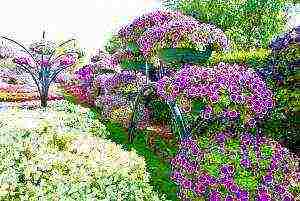Content
- 0.1 Gribovsky
- 0.2 Further
- 0.3 Aurora
- 0.4 Lesnogorodsky
- 0.5 Abundant
- 0.6 Bushy
- 0.7 Alligator
- 0.8 Kibray
- 0.9 Dill
- 1 Varietal features of dill
- 2 The best fragrant varieties of dill
- 3 The best early ripening varieties of dill
- 4 The best mid-season dill varieties
- 5 The best mid-late dill varieties
- 6 Are there varieties without umbrellas?
- 7 Conclusion

If you also decided to start growing healthy herbs, it will undoubtedly be useful for you to learn about the best varieties of dill. Indeed, far from every variety it is possible to obtain lush and fragrant greens with excellent taste. It will be a shame to spend time sowing and caring for dill, and as a result, get frail bushes with practically no smell.
The best early ripening varieties of dill
Dill is very popular in Russia - it is grown in garden beds, in greenhouses and even at home on the windowsill. Of course, in most cases, dill is used simply as a fragrant seasoning in the preparation of various dishes, but some gardeners also value this plant for its many healing properties, using its herbs and seeds to improve health.

Fragrant dill is very popular in Russia - it is grown in garden beds, in greenhouses and even at home on a windowsill
Dill varieties can differ in the shape of the leaves, rosettes, in the height of the bush and in color, as well as in terms of stem formation. Ripening grades will help you better navigate the main varieties and select seeds so that you can harvest greens throughout the season.
Dill video
This group includes varieties that give green mass within 35 days after germination. True, they are slightly less leafy than late-ripening ones, and proceed to flowering almost immediately after the formation of five to six leaves. Therefore, it is advisable to grow early varieties if you want to quickly collect the first fresh greens from the garden, as well as in order to get umbrellas and seeds for conservation.
Gribovsky
An incredibly popular variety among domestic gardeners, it is great both for growing on a windowsill and in the open field. Dill Gribovsky is undemanding to the weather, and even under the condition of a cold summer it forms good greenery. The advantages of the variety also include disease resistance, intense aroma and decent taste. The leaves have a beautiful dark green color, the height of the standing rosette reaches 25 cm. Gribovsky dill can be sown several times during April-July, and winter sowing is also allowed.
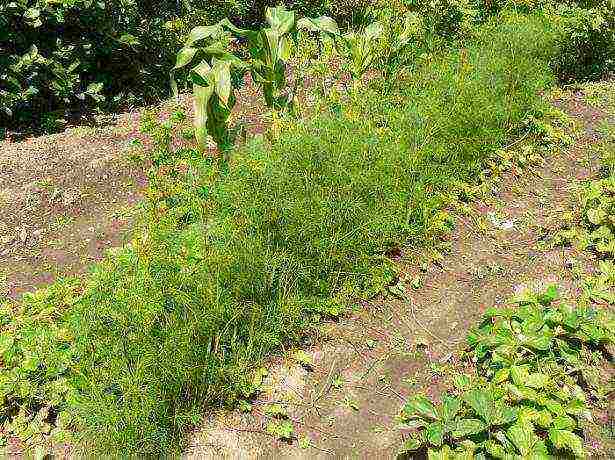
Dill Gribovsky can be sown several times during April-July
Further
Dill variety is perfect for getting early fresh greens, for drying, freezing, pickling and salting. It is valued for its high yield, resistance to lodging and early formation of greenery. After sowing the seeds into the ground, after 38 days, a semi-raised rosette of about 25 cm in height with medium green leaves with a weak waxy coating is already formed. The Dalny variety is resistant to pests and diseases.
Aurora
Of the new varieties, the early maturing dill Aurora deserves attention. After the emergence of young shoots, you can collect greens already on the 25th day.The variety is distinguished by a dense rosette of raised green leaves, very fragrant and juicy, as well as a powerful bush with closely spaced internodes, due to which the foliage is less polluted after rain. Among other advantages of the Aurora variety: resistance to diseases and pests, good yield. In order to obtain an earlier harvest, seeds are sown before winter.

After the emergence of young shoots, you can collect greens already on the 25th day.
Mid-season dill varieties
Stem formation in varieties with medium maturity occurs 5-10 days later than in early ones, as a result of which more leaves are formed on the bushes, and the yield of greenery increases. In addition, in addition to greenery, the plant has time to form umbrellas and seeds suitable for seasoning.
Lesnogorodsky
The peculiarity of this variety of dill is that even in autumn, when its seeds are poured, you can continue cutting the greens. The forestry variety is high-yielding, is not afraid of disease and pests, and its leaves contain large amounts of provitamin A and vitamin C. The leaves grow large and fragrant.
Abundant
The economic suitability of Abundant-leaved dill lasts a long time. Distinctive features of the variety: powerful, well-leafy bush, late inflorescences and large dark leaves. Plentiful-leaved dill has excellent commercial qualities, its leaves are juicy, tender and fragrant. Good fresh, suitable for pickling and pickling. Multiple sowing during spring and summer is possible, as well as sub-winter sowing.

Abundant dill
Bushy
From 30 to 40 days pass from the moment the shoots of the bushy variety appear until the first cut of the greens; dill can be harvested with spices after 70 days. Bushy dill belongs to the abundant-leaved type, you can collect greens from it repeatedly, gradually starting from the lower leaves. It is no coincidence that the Bushy variety is considered one of the best for obtaining high-quality greens in large quantities. Strongly dissected leaves are very fragrant, juicy and tender, good both fresh and dried.
The most popular late-ripening varieties
On the beds, some late varieties do not have time to fully ripen over the summer, but they are best suited for obtaining lush greenery, from spring to autumn, especially when growing at home on a windowsill. Some late-ripening varieties (Buyan, Salut, Alligator) have very close internodes on the stem, from which outwardly they resemble dense bushes, they are called “bush”.
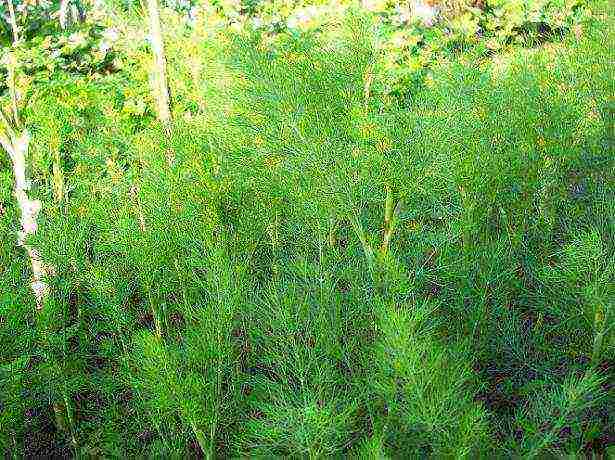
In late-ripening varieties, the greens are more fragrant, beautiful and vitamin
Bush dill is remarkable in that it allows you to collect fresh greens all season without re-sowing the seeds using a conveyor belt method. First, you use young plants when thinning seedlings, then you cut off the lower tier of dill bushes, pluck out the side shoots of their leaf axils, and then collect all the greens from the plant. So, to provide one family with dill greens throughout the season, twenty root dill plants are enough. In addition, late-ripening varieties have more fragrant, beautiful and vitamin-rich greens.
Alligator
Dill Alligator is especially appreciated by domestic gardeners, ideal for obtaining a large harvest of fresh greens, since it can be grown both in a greenhouse and in the open field, harvesting several times per season. On the raised rosette, green leaves with a bluish tint and waxy bloom are formed. Umbrellas appear only towards the end of summer.
Video about the dill variety "Alligator"
Kibray
The widespread Kibray dill is attractive for its wide, heavily dissected leaves that have a bright aroma. The rosette of the plant is large, half-raised, reaches a height of 40 cm. The color of the leaves is green with a slightly yellowish tint and a barely noticeable waxy bloom. In order for Kibray to mature in the garden, it must be sown early or grown under a film.
Dill
A Dutch variety popular around the world for its lush, aromatic greens and ease of growing. Dill Dill is able to grow in any conditions, the umbrella is thrown out late, does not outgrow for a long time and gives a large amount of high-quality greenery. Plants reach a height of 150 cm and can be used not only for consumption in fresh, dried form or as a seasoning for canning, but also for decorative purposes.
Rate the article:
(5 votes, average: 2.4 out of 5)
Not all young gardeners know that there are many varieties of dill. Each of them has its own characteristics of cultivation, taste, application. If you choose the right variety, you can profitably grow it for more than one year. Below in the article will be described the best varieties of dill for various purposes.
The best varieties of dill for herbs
Dill varieties are best suited for greens, which have a high yield and a strong, pleasant aroma. They should also have a beautiful, rich color of the leaves.

The best varieties of dill for herbs
- "Redoubt" - one of the best varieties for greens. The plant is not tall, has a powerful root, a developed basal rosette. The leaves are plump, oblong, the segments are long. The umbrella is large, as fragrant as the greens. The yield per square meter reaches 1.2 kg.
- "Aurora" Is a relatively new variety of dill that can be grown for greens. Ripens in 25 days. Has a thickened rosette of leaves, slightly raised. Leaves are fragrant, juicy, delicate in taste. This variety is not afraid of almost all diseases and easily tolerates the "attacks" of pests. It is usually sown before winter.
- "Grenadier" - ripens within a month after germination. It is usually grown specifically to obtain fragrant, delicate greens and use them fresh. The leaves are large, raised, green with a slight bloom. It is unpretentious in care, the yield is high.
- Richelieu - an unusual variety of dill due to its unusual, large, slightly delicate leaves. It takes about 35-40 days to ripen. The greens are very fragrant, they can be put in fresh salads, first and second courses, canned, and also stored frozen all winter. Known for its resistance to pests.
Are there varieties without umbrellas?
Umbrellas are put in conservation, they also happen, they are used in cooking, cosmetology, folk medicine, but when growing dill for herbs or for sale, they can only interfere. The main problem is that the umbrellas seem to age the dill. Before their appearance, the greens are juicy, young, and after the release of the umbrella, it becomes tough, it can also change the basic color of the leaves. So many gardeners are interested in varieties of dill without umbrellas. Are there any?
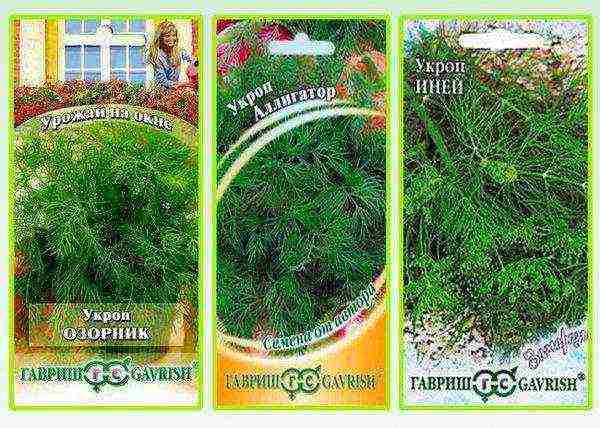
Dill varieties that release umbrella very late
There are no varieties of dill without umbrellas, since the plant reproduces precisely by seeds from them. If there are no umbrellas, then the seeds too, which means that reproduction is impossible. However, for those who grow crops only for greens and for sale, dill varieties were bred, which release an umbrella very late.
- "Mischievous" grows up to 110 cm in height. The stem is light green, there is a waxy coating. The leaves are medium in size and are the same color as the stem. It does not form an umbrella for a very long time. The umbrella is large, with an abundance of "rays", convex. The plant is very aromatic. The yield per square meter is 1.6-3.5 kg / m. sq. depending on growing conditions and care. Used mostly fresh, not for storage.
- "Alligator" ripens 40-45 days after the first small shoots have appeared. For harvesting for seeds, you need to wait up to 110 days. Bush type dill, very aromatic. The umbrella does not appear for a very long time, so the greens are cut repeatedly during the season.The umbrella is not very large and has up to 56 rays. Productivity 1.5-2.8 kg / m. sq.
- "Frost" - medium late variety of dill. The peduncle usually does not have time to fully ripen when the variety is grown in the middle and northern regions. The leaves are gray-green, with a noticeable bloom. It grows up to 1.7 m (if you count with a peduncle). The umbrellas are large and convex. Has a pronounced aroma in all parts of the plant. Up to 2.7 kg of commercial greens are harvested per square meter. Recommended for sale and freezing.
- "Dill" - Dutch variety, grown all over the world. Grows quickly, not picky about care or soil type. The leaves are green, beautiful, marketable, very fragrant, the taste is not obtrusive, light. Blooms late. Together with the peduncle it can reach 150 cm. It is usually consumed fresh.
Bush dill
Dill bush varieties grow in large or small bush, can be quite spreading. They grow well and give bountiful yields only with proper care. It is worth noting that this species requires more care than the usual simple species growing in one stem. Another feature is the long ripening of seeds in the peduncle. In the northern and middle regions, when grown in the open air, they do not have time to ripen, so it is recommended to remove the umbrellas immediately so that they do not pull juices from the bush.
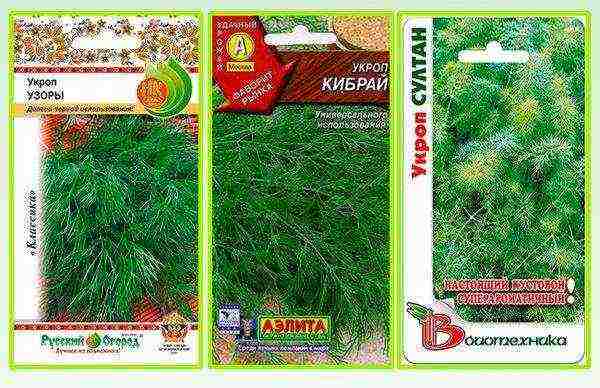
Bush dill
- "Kibray" - mid-season variety of bush dill. It grows actively, gives a lot of fragrant greens, which can be collected for food within 30 days after germination, and it is collected on spices after 72 days. The rosette is quite wide, so it is worth sowing seeds at a considerable distance from each other and thinning out after emergence so that there is up to 20 cm of free space between individual bushes. Up to 6 kg of fresh herbs are harvested from a square meter per season for food. Differs in resistance to fungi.
- "Patterns" - a variety of bush dill with slow growth. Medium late, fruitful. The leaves are large, fragrant, growing from the root, and also located directly on the stem of the umbrella. The main harvest is harvested approximately 2 months after the emergence of seedlings, when the bulk of the green mass has grown. This dill contains a lot of vitamin C and is not susceptible to fungal diseases.
- "Sultan" - a new, very fragrant variety. It is better to grow it through seedlings and in a greenhouse, then the yield will be very high, sometimes the seeds are sown before winter. Ripens in 40-45 days.
- "Gourmet" - a variety of bush type dill. Ripens quickly, in 40-45 days, gives a lot of greens. The leaves are fragrant, dark green, soft. Very easy to grow. It can be sown already at a temperature of +5 degrees. Not afraid of diseases.
- "Bushy" ripens in just 40 days. The leaves are dark green, fragrant, soft. Greens do not lose their presentation for a long time, they have universal application. Care is not difficult, the yield is high.
What varieties are reliable and unpretentious?
If dill varieties are grown purely for personal consumption or sale in small quantities, it is worth giving preference to simple, time-tested species that are unpretentious in care and grow quickly.
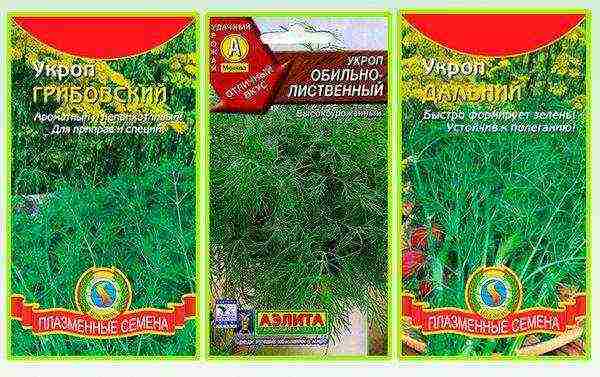
Varieties that are distinguished by reliability and unpretentiousness
- "Gribovsky" - probably the simplest and most familiar variety of dill for everyone. It is usually not even sown, since it can reproduce on its own and grows in many areas like weeds. But this does not mean that the variety is not tasty or bad, it is just very strong, tenacious and can reproduce even without the help of a gardener. It is not picky about growing conditions and soil. It grows quickly, even in cold summers it gives a lot of greenery. It is resistant to diseases, has a pleasant, rich aroma and delicate taste. The color of the leaves is dark green, grows to about 50-70 cm (with an umbrella).
- "Further" - an early variety of dill for universal use. It is appreciated for its yield, disease resistance, lodging.It grows quickly, within 38 days from the day of sowing, it forms a rosette up to 25 cm in height. The leaves are green, normal in shape, there is a waxy coating.
- "Abundant" - mid-season variety. Ripens for greens by 45 days after germination, and if you need to collect dill with spices, then by 70 days. Grows up to 130 cm with an umbrella, compact. The leaves are medium in size, beautiful green color, with a bloom. Productivity 3-3.4 kg / m. sq. Recommended for good aroma, pleasant taste, universal application.
VIDEO - Garden and vegetable garden. Dill
Dill (Anethum graveolens L.) belongs to the celery family. Grown as an annual. In cooking and medicine, all ground parts are used - tubular stems, feathery leaves, aromatic seeds. Cultivated in regions with warm, sunny summers. For a generous harvest, you need a fertile, loose soil rich in humus. Lack of nutrients, light and heat reduces the quality of the plant.
Contains aromatic essential oils that are beneficial to:
- act on the digestive tract;
- regulate blood pressure;
- have a sedative and hypnotic effect.
The popularity of the culture has inspired breeders to create new varieties for open ground and greenhouses.
Varietal features of dill
Delicate leaves with a spicy aroma are eaten. It is thinnest before flowering in late May - early June. As it matures, essential oils accumulate and the smell becomes rich and spicy.
When planning to lay a bed, it is important to decide why it is needed:
- For succulent leaves;
- Spicy stalks used in pickles;
- Seed for medicine.
Then it is easier to determine which varieties of dill are best for sowing.
An important sign of choice is stem formation. There are such varieties:
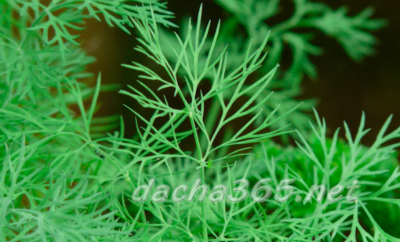
- "Early ripe" - grown for greens;
- "Medium late" - for young green mass and for umbrellas on spices;
- "Late", which ripening period of 65 - 70 days, allow you to get green mass at the end of summer, without re-sowing. This group includes varieties of bush dill with short internodes and densely branched stems. They form neat rosettes. Their leaves are torn off gradually, starting from the lower tier. The remaining bush sprouts new shoots.
Important! By choosing varieties according to the characteristics of ripening, you can ensure an uninterrupted harvest from spring to the very frost.
The best scented dill varieties
Dill is able to improve culinary dishes not only fresh, it is remarkably amenable to drying, while retaining its aromatic properties. There will be more benefits if you prepare varieties with a record amount of essential oils. Among them are such representatives:

- Alligator;
- Umbrella;
- Amazon;
- Frost;
- Kibray;
- Kutuzovsky;
- Grenadier;
- Mischievous;
- Richelieu;
- Redoubt.
Most of them produce leafy greens all summer, as the umbrellas form late in mid-August.
The best early ripening varieties of dill
After a long winter, the smell of the first vegetable garden is a symbol of spring. It is all the more pleasant when fragrant leaves appear in May. To harvest greens at this time of year, early dill varieties are sown shortly after the snow melts, and some are sown before winter.
Grenadier
Differs in rapid growth. From sowing to harvesting juicy leaves, a month and a half pass. Full ripening of seeds occurs in 75 - 90 days. All parts of the plant (greenery, shoots and seeds) are used throughout the growing season. Large dense leaves provide a yield of 1.5 - 3 kg / m2. For spices, you can collect up to 5 kilograms of raw materials.
Gribovsky
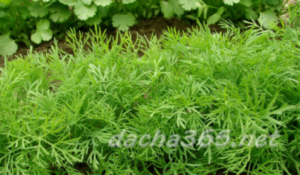 One of the earliest varieties that can be bought everywhere. It is grown in the garden and in greenhouse conditions. The period from germination to the first harvest of leaves is 30 - 45 days, the final maturity on the spice occurs in 55 - 70 days.
One of the earliest varieties that can be bought everywhere. It is grown in the garden and in greenhouse conditions. The period from germination to the first harvest of leaves is 30 - 45 days, the final maturity on the spice occurs in 55 - 70 days.
The stems form a large neat rosette, 25 cm high. The leaves are dense, feathery, with a bluish-gray tinge. They have a strong aroma and rich taste. Technical weight of one plant for spices - 30 g, leaf weight - 1 kg.
Reference! Gardeners prefer the Gribovsky variety for its exceptional unpretentiousness and resistance to diseases and pests.
The variety successfully reproduces by self-sowing, which allows you to add seeds to the soil in the fall, when the average daily temperature is below + 80. In warmer weather, the seeds germinate, the shoots die during the first frost.
Those who grow this variety in a temperate climate zone rightly believe that this is the best dill for the Moscow region.
Further
Early maturing (38-40 days from germination to harvest) variety. Due to its high leaf yield (2 - 2.5 kg / m2) it is grown on an industrial scale for sale, for winter harvesting in dry and frozen form. Greens grow on average in a month and a half. The leaves are characterized by a waxy bloom.
If the seeds are sown at the end of April, the first crop is harvested at the end of May. Does not lie down from torrential rains, staunchly resists pathogens.
Umbrella
 High-yielding variety. 5 - 6 kg of greens are obtained from one square meter. Sowing is carried out earlier than other varieties in late March - early April, immediately after the snow melts. The seeds are placed in the soil 1.5 - 2 cm deeper than other varieties. That allows you to get the maximum moisture required for seedlings.
High-yielding variety. 5 - 6 kg of greens are obtained from one square meter. Sowing is carried out earlier than other varieties in late March - early April, immediately after the snow melts. The seeds are placed in the soil 1.5 - 2 cm deeper than other varieties. That allows you to get the maximum moisture required for seedlings.
This method allows you to get the first greens in May. Periodic removal of young leaves is carried out selectively throughout the growing season. The final crop is harvested 60 to 85 days after sowing.
Redoubt
Forms compact, raised rosettes, from which 20 - 40 g of fresh leaves with a rich aroma. The first collection is carried out one and a half months after seed germination. For the season, 1.2-1.3 kg of leaves are obtained from one square meter, and 1.4-2.0 kg of raw materials for spices.
It's important to know! Early maturing varieties are prone to the rapid formation of inflorescences. Umbrellas appear before the leaves acquire marketable maturity. That is why it will not be possible to collect a lot of greenery.
The best mid-season dill varieties
This group is characterized by the formation of 8 - 10 large leaves on one bush. They appear alternately, allowing for selective harvesting. Young shoots continue to grow until the next harvest.
Watch the video! Choosing the best varieties of dill
The best varieties of dill for greens belong to the mid-season category, otherwise it is called mid-late.
Umbrella
The hybrid is recognizable by its large, bright green leaves. The plates are strongly dissected, with thin threadlike segments. All parts of the plant have a strong aroma. The stem grows up to two meters in height. Densely branched umbrellas contain up to 50 peduncles. The diameter of the inflorescence is 15 - 20 cm.
Characteristic:
- The weight of greens harvested from one bush is 15 - 20 g;
- Acquires marketable maturity after 40 - 48 days from germination of seedlings;
- The total amount is 0.9 - 1.8 kg / m2;
- 35 - 40 g of spices are harvested from an area of 1 m2 2.5 - 3 months after sowing.
Amazon
The recommended sowing time is the end of April, beginning of May. The greens can be cut off after a month and a half. Up to 15 - 18 leaves with a silvery shade are formed on one plant at the same time, which is 20 - 40 g. Total weight - 2 - 2.5 kg / m2. Spice yield - 2.5 - 6 kg / m2.
Attention! The raised shape of the rosette protects the dill from pollution during spring rains.
The variety is used to obtain fresh greens and for planting on umbrellas, which are needed when pickling vegetables.
Kibray
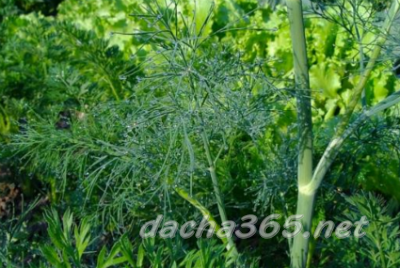 Well suited for the Urals and Siberia, as it tolerates low temperatures down to minus 50. Leaves gain juiciness after a month and a half from sowing. The collection of spices takes place after 50 - 70 days. Before the appearance of umbrellas, the rosette grows up to 40 cm. The leaf blades are strongly dissected, the segments are thin, dense, bright green in color. The aroma of medium saturation is pleasant, unobtrusive.
Well suited for the Urals and Siberia, as it tolerates low temperatures down to minus 50. Leaves gain juiciness after a month and a half from sowing. The collection of spices takes place after 50 - 70 days. Before the appearance of umbrellas, the rosette grows up to 40 cm. The leaf blades are strongly dissected, the segments are thin, dense, bright green in color. The aroma of medium saturation is pleasant, unobtrusive.
Seeds are sown in early spring or before winter. In case of recurrent frosts, they are protected with a covering material, for example, agrofibre.
From one square meter, 2-6 kg of greens are obtained.
High resistance to fungal diseases allows growing the variety in damp climates.
Max
Sowing is carried out in the spring, when the soil warms up to +80, then the seedlings appear on the 8-10th day, and the leaves for collection are ready in a month and a half. One outlet gives 20 - 40 g of greens. Total weight - 3.5 - 4 kg / m2. About 60 g of spices are obtained from one adult plant, 2.5 - 4 kg from a square meter.
Gardeners appreciate the variety for its unpretentiousness, compactness, and pleasant aroma.
Richelieu
The first harvest of greens is removed 40-50 days after sowing, the final collection of spices takes place in 2.5-3 months.
Characteristic: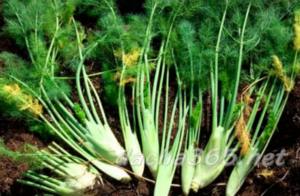
- Greens of bright saturated color with a silvery bloom. Segments - thin, delicate, long;
- Height - 110 - 120 cm;
- Umbrella diameter - medium;
Greenery weight - 1.5 kg / m2, spices - 3.7 kg / m2.
Recommendation! Throughout the growing season, the variety retains green leaves on the entire stem, without losing its effectiveness. This property of the variety is used by landscape designers in ornamental gardens.
A positive property that attracts gardeners is unpretentious care and resistance to disease.
The best mid-late dill varieties
Kutuzovsky
Botanical features of the variety:
- Branches are large, up to 20 cm, light green in color, highly branched, with thin feathery segments;
- The size of the bush is 1 m;
- Umbrella inflorescence - 15 - 20 cm.
Commodity qualities:
- The aroma is strong;
- The taste is pleasant, full-bodied;
- The weight of the leaves of one rosette is 20 - 30 g;
- The total mass of greenery is 1.5 kg / m2;
- The amount of spices - 60 g / piece, 1.8 kg / m2.
Salute
 Refers to bush varieties in which the stems are poorly formed. Due to this, the greens are harvested throughout the entire growth of the dill. The color of the pinnately dissected plates is light green with a waxy bloom. A bush rosette simultaneously forms up to 30 leaves. The compact size of the bush 35 - 40 cm, allows you to grow the variety in greenhouse conditions, and even plant it on a windowsill, like a houseplant.
Refers to bush varieties in which the stems are poorly formed. Due to this, the greens are harvested throughout the entire growth of the dill. The color of the pinnately dissected plates is light green with a waxy bloom. A bush rosette simultaneously forms up to 30 leaves. The compact size of the bush 35 - 40 cm, allows you to grow the variety in greenhouse conditions, and even plant it on a windowsill, like a houseplant.
Technical maturity occurs 40 - 45 days after sowing, which is carried out from May to August. Greenery yield - 4 - 4.5 kg / m2.
Borey
Differs in long leaves - up to 35 cm, dark green color, silvery shade. Has a strong, spicy scent. The green mass grows quickly, which allows for frequent harvesting. A rare positive quality - it does not turn yellow for a long time, unlike most varieties.
The period from sowing to market maturity:
- 35 - 60 days - for greens;
- 70 - 100 days - for spices.
Productivity is one of the highest:
- Sheet - 4 - 4.5 kg / m2;
- Spices - 2 - 3 kg / m2.
Are there varieties without umbrellas?
With the appearance of inflorescences, the dill leaves become tough, the delicate aroma changes to a sharp spicy smell. To obtain fresh greens with a delicate taste, varieties were bred that bloom later than others. There are no hybrids without umbrellas yet. But there are those that give the maximum amount of juicy leaves.
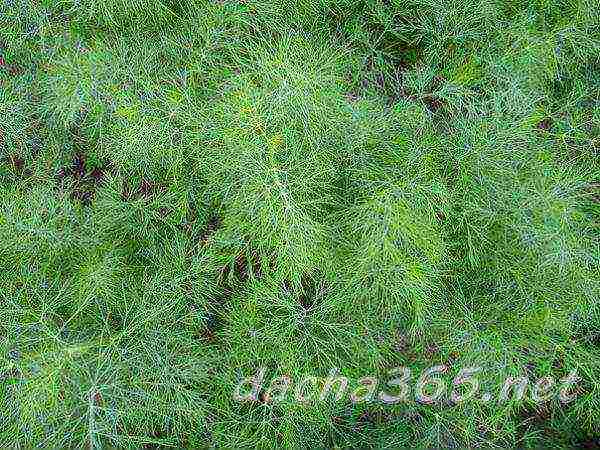
Naughty
The main advantage is fast growth, juicy greens are harvested 2 - 3 weeks after sowing. Sow in early spring, shortly after the snow melts. The rosette is small - 15 - 20 cm, but densely leafy. The variety is used in the open field and in the "garden on the windowsill".
25 - 35 g of leaves and 1.5 - 3 kg / m2 are removed from one plant.
In greenhouses and at home, it is grown all year round, in winter with additional lighting.
Alligator
One of the favorite varieties of gardeners. Delicate, delicate greens can be harvested from June to September. Marketable ripeness of leaves is formed in 40 - 45 days after germination. The seeds ripen after 100 - 120 days.
Umbrellas are formed late, their diameter is small. Due to this, the green mass is harvested for a long time. Total weight from 1 m2 - 1.7 - 3.2 kg.
Frost
The variety is recommended for areas with a cool climate, due to the late appearance of inflorescences. Used successfully for leaves in the second half of summer and early fall. Characteristic:

- The height of an adult plant is 1.5 - 1.7 m;
- Short internodes fill the stem with thick clay leaves. Coloring - green - gray;
- The aroma is strong.
Productivity:
- Greenery - 1.7 kg / m2;
- Seeds and stems - 2 - 3 kg / m2.
Dill
The Dutch hybrid, widely used all over the world, is getting more and more positive reviews.
Characteristics:
- Young leaves form a raised rosette. 18 - 20 cm in diameter;
- The period for obtaining green mass is 35 - 48 days;
- Since the inflorescences appear late and the stems coarsen slowly, the variety is used for harvesting leaves at 2.5 - 3 kg / m2.
Conclusion
Dill contains many useful substances - vitamins and oils. Thanks to selection, you can choose varieties for any conditions - open ground and indoor garden. That diversifies the diet at any time of the year.
Watch the video! Dill varieties and growing secrets
Dill is one of the most unpretentious, fast-growing and year-round vegetable crops. Few salad, soup or main course is complete without dill. In this post, we will tell you about the best popular varieties of dill for greens. You will find out which groups of dill they belong to (early, mid- or late-ripening) and what features differ from each other. This information will help you decide on the answer to the question - which dill is better to sow on greens?
Dill greens
Content:
- Features of groups of varieties of dill
- Early varieties of dill
- Mid-season dill varieties
- Late-ripening varieties of dill
Features of groups of varieties of dill
Dill varieties differ very markedly. They can have completely different rosette shapes, the degree of dissection and color of the leaves, as well as the length, width and shape of the segments located at the end of the leaf.
It takes a little time from sowing, when stems begin to form on the dill, which means that the first crop can be harvested. It is by the time of the beginning of stem formation in dill that one can judge whether the variety belongs to one or another group.
So, the first group includes varieties of dill, which in central Russia begin to stem formation a month or a little more after sowing. Dill of this group, perhaps, is not very good in that almost immediately after the beginning of stem formation, it proceeds to the formation of an inflorescence and forms no more than six leaves (with a lack of moisture in the soil, there can be only four of them).
Group two - these are mid-season dill varieties. In them, stem formation occurs 45-50 days after the emergence of seedlings on the soil surface. Including due to this property, the varieties of this group form up to ten leaves, which indicates a very solid yield of dill, and a more extended consumption of fresh green mass of this plant. It is clear that mid-season varieties, in addition to the green mass, form umbrella inflorescences already in the current season, allowing them to collect seeds, or self-sow themselves.
The third group includes late-ripening varieties of dill. They have a powerful and well leafy rosette, in which there are always more than ten leaves. Varieties of the third group give the maximum yield, but it will take almost two months to wait for it. From plants belonging to the third group, you can harvest fresh greens for as long as possible.
Early varieties of dill
Dill "Grenadier"
This is an early ripening variety of dill, which takes from 30 to 35 days from germination to the first harvest of greens. Ideal for cultivation for the sake of collecting greens. The best time for sowing seeds of this variety is the end of April or the beginning of May. Forms a rather large rosette of leaves sticking out above the ground, reaching a height of 29 centimeters. The leaves are green in color, have rather large segments. The greens taste pleasant, the dill aroma is bright. The "Grenadier" is characterized by unpretentiousness. The yield of this dill can range from one and a half to three and a half kg per square meter.
Dill "Gribovsky"
From sowing seeds to harvesting the first harvest, it usually takes 25-40 days.The variety is wonderful in that it grows equally well in the garden and at home - on the windowsill. This dill is resistant to the vagaries of the weather and gives excellent yields, even if the summer is cool and rainy.
The variety is resistant to a whole range of diseases. Among the advantages can be called a very pleasant, intense "dill" aroma emanating from the leaves of this plant. The leaves are dark green in color. Dill "Gribovsky" - high, can stretch for 25-30 centimeters. The best time to sow seeds of this variety outdoors is from April to early July. Multiple sowing is allowed in order to extend the season for the consumption of fresh green mass.
Dill "Grenadier" Dill "Gribovsky"
Dill "Dalny"
From sowing seeds to harvesting, it usually takes from 38 to 40 days. The dill variety is ideal for getting early greens, it lends itself well to freezing and retains its taste after defrosting (defrosting). The leaves of the variety can be dried, salted and pickled. Dalniy dill has a high yield. The leaves are green in color with a barely noticeable waxy coating. The variety is resistant to a whole range of diseases.
Dill "Redoubt"
Ripens early - from 39 to 41 days. Ideal for growing in green mass. The seeds of this variety of dill are best sown in the ground in late April or early May. The variety has a rosette of leaves raised above the soil surface. The leaves are medium in size, have a green color, very fragrant. Up to 40 grams of green mass can be harvested from each plant in good soil and with sufficient care. The yield per square meter also varies from 1.22 to 1.23 kilograms. Dill variety "Redoubt" is very good for fresh consumption, suitable for freezing and canning.
Dalniy dill Redoubt dill Mid-season dill varieties
Dill "Umbrella"
Dill "Umbrella", first of all, is ideal for canning. From sowing seeds to harvesting, 34-37 days pass. The variety is resistant to adverse weather conditions, to a number of diseases and pests. Dill leaves are dark green in color, very aromatic, pleasant to the taste.
Dill "Amazon"
50-55 days pass before harvesting green mass. The dill variety is ideal for growing precisely for the sake of obtaining green mass. The most optimal time for sowing seeds in the ground is the end of April-beginning of May. The variety of dill "Amazon" has a rosette of leaves raised above the surface of the earth. They themselves are massive, green with a bluish tint. The leaves taste very juicy, very aromatic. A feature of the variety is its amazing unpretentiousness to soil and climate. From a square meter, you can collect from 1.4 to 4.1 kilograms of green mass.
The undoubted advantage of dill "Amazon" is the amicable ripening of its green mass, increased juiciness and tenderness of greens, a long period of harvesting before flowering. Greens are ideal for drying, freezing, seasoning, pickling and salting.
Dill "Umbrella" Dill "Amazon"
Dill "Lesnogorodsky"
I would like to highlight an important feature of "Lesnogorodskoy" dill - it can increase the green mass even during the flowering period, and this is convenient for those who have small gardens and are unable to carry out multiple crops. From full germination to harvesting for greenery 40 days. The yield of the variety for greens is quite high - 1.4-2.0 kg / m2, the quality of the green mass is excellent. The plant itself is quite tall (100-130 cm), very densely leafy, the leaf color is very rich, green with a slight bluish tint. The dill variety is resistant, its leaves are stored well and for a long time in the refrigerator.
Dill "Richelieu"
From germination to harvest, 40 or 42 days pass, a week after the start of harvest, the variety throws out a flower "arrow". Dill "Richelieu" is wonderful fresh. The best time to sow seeds of this variety is late April – early May. Richelieu forms a large rosette of leaves. The sheets are lacy, have thin and long lobes, painted in a bluish-green tint.A distinctive feature of the variety is that during the flowering period on dill there is an abundance of leaf mass and it smells quite intense.
The variety is resistant to pests and diseases. For those who collect the seeds themselves, it will be useful to know that they are ripening at the end of summer. High resistance to pests, mainly due to its aromatic properties. We can say that this dill is decorative. From a square meter, you can collect from 3.7 to 4.1 kg of green mass. If you want to extend the season for the consumption of fresh herbs of this variety as much as possible, then sow it, starting from April to August, every two weeks.
Dill "Lesnogorodsky" Dill "Richelieu" Late ripening varieties of dill
Dill "Alligator"
Medium late grade. After 42-45 days from the emergence of seedlings, you can harvest. Alligator dill is a bush variety, perfect for growing on greens. A feature of the variety is that it does not throw out umbrellas for a long period, so you can cut greens not in a couple of tricks, as usual, but for a larger number of them. The best time for sowing seeds of this variety in the ground is late April-early May. The variety is characterized by a large rosette of leaves, raised above the soil surface, from which they often remain clean.
Dill leaves are green in color with a bluish tinge, very aromatic, very tasty. From one plant, you can collect from 30 to 60 grams of green mass, and if the soil is nutritious and agricultural technology is excellent, then you can collect from 100 to 150 grams of green mass. Plants are not tall, their height ranges from 14 to 25 centimeters. The yield per square meter can range from one and a half to two and a half kilograms.
Dill "Patterns"
The variety is high-yielding. Perfect for fresh consumption and for processing. A medium late variety of dill (from the first germination to harvesting, it takes from 42 to 57 days). The rosette of leaves is rather large, slightly spreading. The leaves themselves are large, noticeably dissected. The dill is quite high, often reaching a meter. From one plant, you can collect about fifty grams of greens. The variety has a high aroma, practically does not get sick.
The undoubted advantages of the Uzory variety include its yield and increased aroma. The optimum seeding depth for this variety of dill is slightly more than a centimeter. The variety grows best on sandy loam soils, light loams and well-cultivated substrates. Loves the abundance of moisture in the soil and an abundance of light.
Dill "Buyan"
It usually takes 60-75 days to collect the first green mass. The variety has the strongest dill aroma, the leaves are distinguished by extraordinary juiciness, long-term keeping quality. The plant has a bushy shape. From one bush on good soil and with perfect care, you can collect from 200 to 250 g of green mass. The leaves are dark green in color with a bluish bloom, a waxy bloom is also noticeable, which gives the bush a certain decorative effect.
Since the plants are powerful, it is better to leave no more than three dozen plants per square meter. Dill variety "Buyan" responds very well to additional (to natural moisture) watering. The green mass can be harvested in several passes.
Dill "Alligator" Dill "Patterns"
Dill "Borey"
Dill of late ripening period, the period from germination to harvesting for greens is 40-55 days. The variety is characterized by strong foliage and high vigor. An adult plant can grow up to 140 centimeters. Thanks to the extended sowing, the season for the consumption of fresh herbs can be extended by almost three months. The leaves of the variety are covered with a noticeable waxy bloom. An interesting feature of the variety - even at a late stage of development, dill leaves almost do not turn yellow.
Dill "Kibray"
Widespread and well known. Despite the fact that it belongs to the third group, it also grows green mass rather quickly. Already after 30-40 days, the first harvests of very fragrant leaves can be harvested.This is bush dill, it has a very wide and spreading rosette of leaves, so keep in mind that too thick plantings should be thinned out so that the plants do not interfere with each other. The optimal distance between plants of the "Kibray" variety is two tens of centimeters. This dill is resistant to many diseases. You can collect up to five kilograms of greenery from a square meter.
Dill "Salute"
It should be noted right away that the leaves of this variety of dill do not turn yellow. It usually takes 55-60 days from germination to harvesting the first green mass. It is a bushy plant that grows to a height of 56 centimeters. The outlet can have up to three dozen leaves arranged vertically. The leaves are large, have a slight waxy bloom and long petioles reaching 16 centimeters. Up to 97 grams of green mass can be harvested from one plant. Another feature of the variety is that it practically does not shoot. You can collect greens in two or three steps, which allows you to stretch the season for the consumption of fresh dill. Up to 2.8 kilograms of greens can be harvested from a square meter.
Dill "Borey" Dill "Kibray" Dill "Salute"
We have presented the best and most famous varieties of dill today, grown for the sake of obtaining greenery. The State Register indicates that they are zoned for all regions of Russia.

